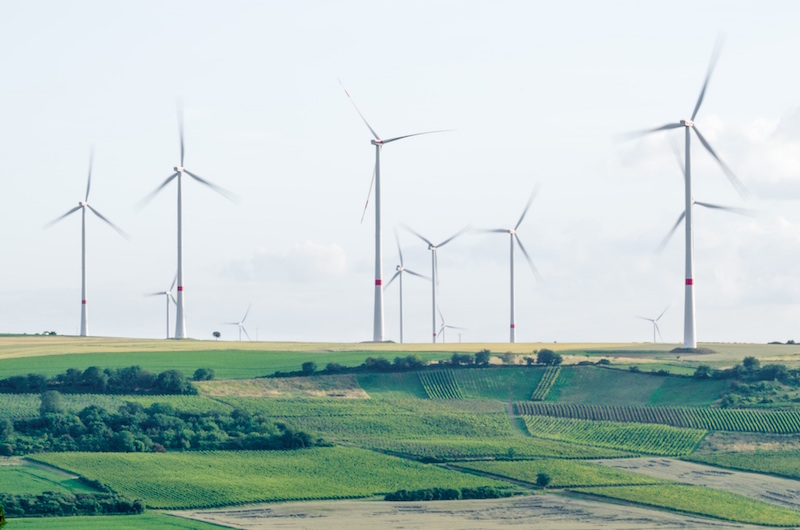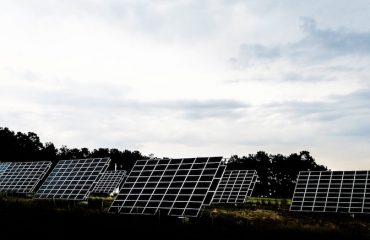
Guest post by Jordi Torres – Managing Director at EDF EN Services UK and author of the energy blog Fait Accompli.
The 2016 energy sector investment agenda seems to be driven at the moment by a number of factors that we are going to draw here. COP 21 summit has made very visible the targets for global warming. A limit temperature change of 2ºC and the current position for many countries (with still long way to meet its 20-20 targets) create a great opportunity for renewable investment. Therefore, many investments will be needed.
Let´s review some of the elements…
Trend #1: Upstream oil companies invest in clean technologies
Oil and gas companies seem appear keen to diversify revenue streams through the addition of renewable energy into their portfolios. Statoil’s new US$200m venture capital fund will invest in growth companies in the renewable energy segment, while French energy group Total bought stakes in two solar power start-ups via its US$150m Total Energy Ventures capital fund.
Total has unveiled its new climate strategy for the next 20 years, focusing on improving the carbon intensity of its production mix, developing renewable energies and improving energy efficiency. aims to increase the share of renewables in its portfolio to 20% by 2036: Total aims to become one of the top three solar player.
On the other hand and according Reuters, Shell is setting up a dedicated ‘new energies’ unit that will incorporate its wind and solar as well as hydrogen and biofuel investments.
Trend #2: Power utilities turning tight angle to green as well
Amid continued low wholesale prices in a number of regions and impairments of assets in Europe, more companies and funds are keen to deploy capital and diversify operations.
As example, SSE leads flagship Beatrice project to GBP 2.6 billion financial close. The 588 MW Beatrice offshore wind farm off the coast of Scotland reached financial close in a deal worth £2.6 billion.
Fortum Oyj announced a new vision focused on clean energy, customers and shareholder value creation, including the establishment of two new business units relating to M&A and renewables development, and technology and new ventures. While Wartsila, the Helsinki-based power plant manufacturer has announced its entry into the solar power industry.
Trend #3: Power utilities sell equity stakes in assets to raise capital
Enel is hoping to sell $1bn worth of power assets this year, as part of a four year disposal target. That means EUR1bn out of EUR6bn by 2019 according to CFO Alberto De Paoli.
E.ON’s (EONGn.DE) conventional power generation subsidiary Uniper plans to reduce debt by cutting costs and by selling at least €2bn of assets by 2018.
Trend #4: Assets writes off
Financial Times reports that EU utilities wrote off a record amount of value from their assets in 2015, the total cost of impairments amounting to more than €100bn in the past six years.
Since the beginning of the decade, more than 50 GW of gas-fired capacity in Europe.
RWE (RWEG.DE) and E.ON posted significant losses following their coal and gas plant write-downs in 2015.
Trend #5: Divestments fund expansion into new markets
Utilities are continuing to divest non-core assets to fund expansions into overseas and adjacent markets. Italian gas company Snam announced plans to spin off domestic distribution operations to fund expansion of its core transmission business across Europe. Spain-based integrated oil and gas company Repsol sold its piped gas business to EDP as part of its divestment strategy.
Trend #6: Investors targeting renewable
There is a continued strong activity in the renewable energy markets, particularly wind. In line with the previous trend, some utilities recycle cash selling stakes in wind energy generation assets. Financial investors are predominantly the new owners. As example, the previous of SSE with Copenhagen Infrastructure Partners and Chinese firm SDIC Power.
Also French energy group EDF Energies Nouvelles has signed a strategic partnership with Canadian pipeline operator Enbridge, to sell a 50% in Eolien Maritime France (controlling the three future offshore wind parks in France with a cumulate capacity of 1,400 MW). Or Greencoat UK Wind Plc and GMPF and LPFA Infrastructure LLP acquired a 49.9% stake in Clyde Windfarm Limited from SSE.
Trend #7: Renewables dominate deals
In line with trend#5 and #6, many of energy deals involved wind generation, with utilities across the UK, Spain and Norway selling around 1GW of these assets to capitalize on strong investor interest. We also saw deals involving around 1GW of solar energy assets.
Wind energy, particularly UK offshore wind, was the favoured segment due to stable long-term cash flows.
Trend #8: High interest in regulated assets
Valuations of transmission and distribution assets is high. As more utilities invest in this segment to achieve stable, regulated revenues, even further increases in these valuations are expected.
E.ON focus is on renewables, networks and services.
Trend #9: Investment in energy services, digital and disruptive technology assets
Declining revenue from electricity sales is also driving utilities to explore cross-sector investment at an increased rate, particularly as a way to acquire new energy technology and offer the different products and services customers are demanding.
Power utilities companies either buying, partnering or acquiring stakes in the energy services, connected homes, distributed energy and battery storage space, in a trend that is driving increased M&A activity.
As example, E.ON partner with SOLARWATT GmbH to develop an electricity storage system and Statkraft has launched operations of its first multi-megawatt-battery in TenneT’s German grid area.
Trend #10: Utilities partner with financial investors
There is a growing trend of power utilities and investors partnering to accomplish projects. For instance, Enel and Marubeni have signed a Memorandum of Understanding to evaluate potential opportunities for joint development in the gas generation sector in the Asia-Pacific region; this agreement follows the renewable energy partnership agreement signed in 2015.
Finale
The energy sector is under a structural shift. Low power prices, high exposure to volatile generation assets and writes off estimates earnings growth for European utilities to exceed 1% through 2016.
Focus on traditional segments of the value chain is challenging its traditional way of operating and have proven to be built for failure, therefore power utilities are restructuring to focus on different parts (being a notable example Uniper and E.ON).
Thermal power, once central to the energy portfolio, is being divested or closed and there is a new focus on renewable and an increasing role in the power sector of investors.


